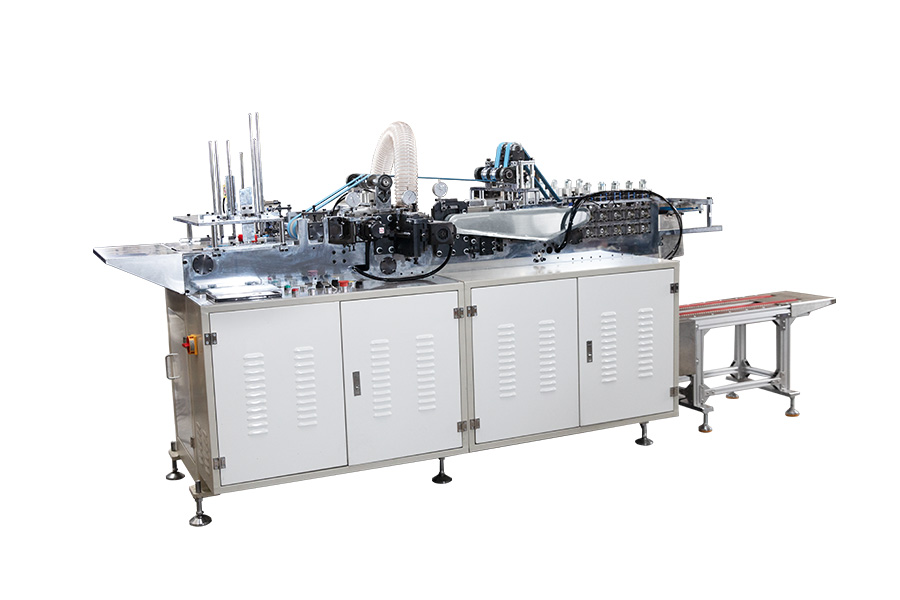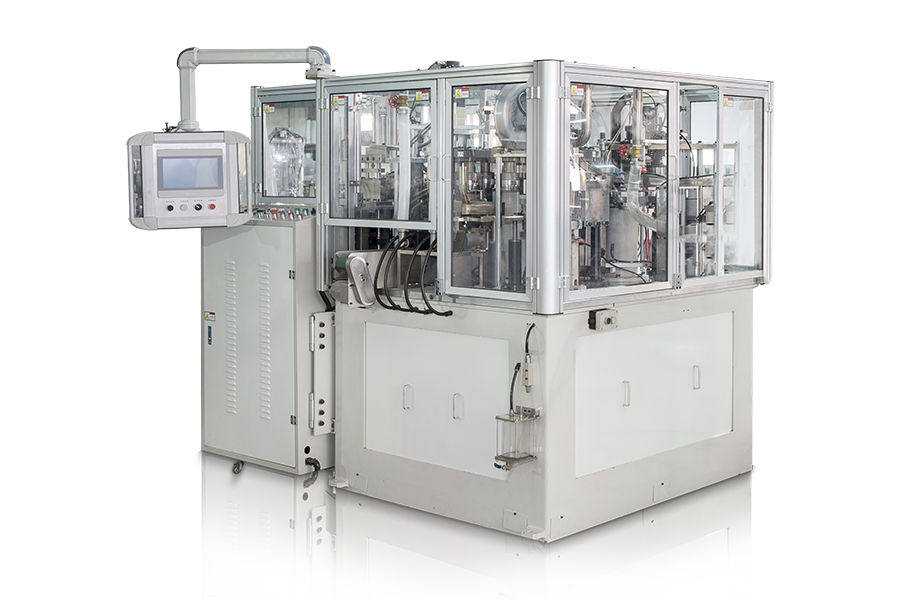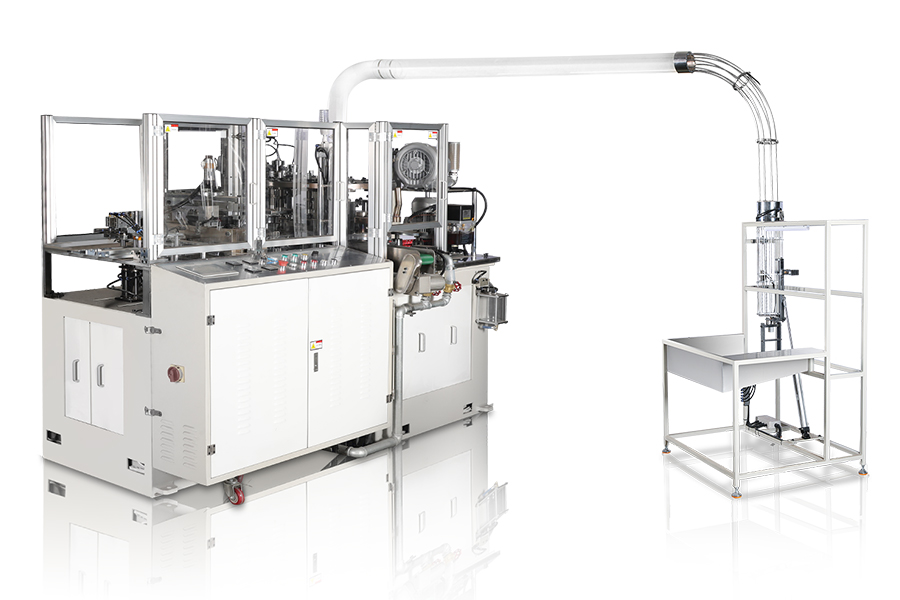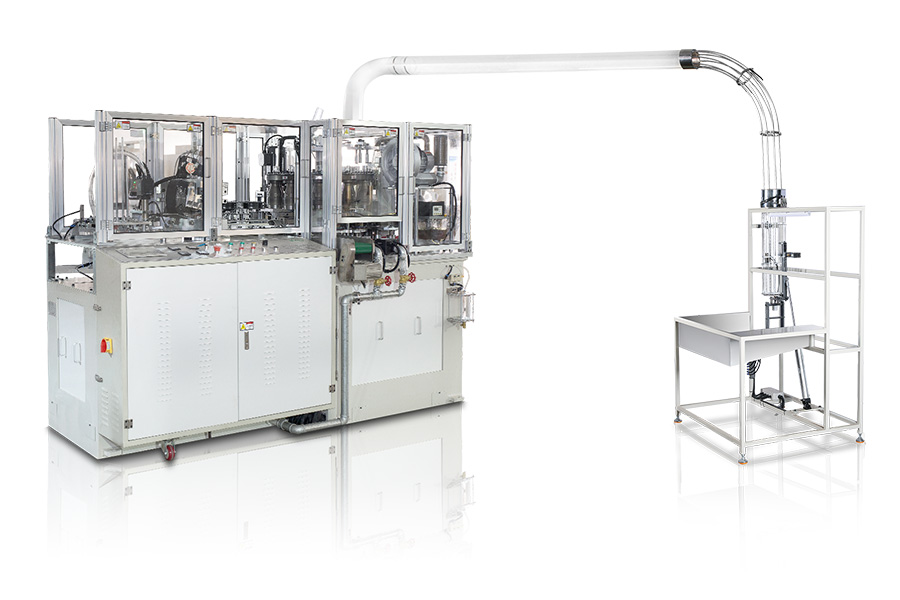Introduction
In a world where hygiene, sustainability, and convenience dominate consumer choices, disposable packaging has become essential. From morning coffee runs to takeout meals, paper cups are omnipresent—globally, over 500 billion paper cups are used annually, a number projected to grow by 5% annually through 2030. This surge in demand has made the paper cup machine a cornerstone of modern manufacturing.
But why paper cups? Unlike plastic, paper is biodegradable and often sourced from recycled materials, aligning with the global push for eco-friendly packaging. For businesses, this translates to a market ripe with opportunity: cafes, fast-food chains, airlines, and healthcare facilities all rely on affordable, hygienic paper cups. Whether you’re a startup looking to enter the market or an enterprise aiming to scale production, understanding the role of paper cup machines is critical.
This guide dives deep into how these machines work, their types, key features, and how to build a profitable business around them. We’ll also explore emerging trends, sustainability innovations, and the challenges of scaling production—equipping you with the knowledge to thrive in the disposable packaging revolution.
What is a Paper Cup Machine?
A paper cup machine is a specialized piece of equipment designed to transform flat paper blanks into functional, leakproof cups. These machines automate the complex process of shaping, sealing, and finishing paper cups, eliminating the need for manual labor in high-volume production.
At its core, a paper cup machine handles multiple steps in one continuous workflow: cutting paper into precise shapes, forming cylindrical bodies, attaching bottoms, sealing seams, and curling rims. Modern machines use advanced technologies like ultrasonic welding and programmable logic controllers (PLCs) to ensure consistency—even for high-speed production lines churning out hundreds of cups per minute.
What sets these machines apart is their adaptability. They can produce cups for hot beverages (lined with polyethylene to resist heat), cold drinks (often with thicker paper), or specialty uses like soup cups (reinforced for rigidity). This versatility makes them indispensable for businesses catering to diverse markets.
Types of Paper Cup Machines and Their Capabilities
Not all paper cup machines are created equal. The right model depends on your production goals, budget, and labor availability. Here’s a detailed breakdown of the main types:
1. Manual Machines
- Speed: <30 cups per minute
- Automation: Requires manual feeding of paper blanks and oversight of each step.
- Ideal For: Small-scale operations, such as local cafes or artisanal producers making custom cups.
- Pros: Low upfront cost (€2,000–€8,000), easy to operate, minimal maintenance.
- Cons: Limited output, labor-intensive, unsuitable for large orders.
2. Semi-Automatic Machines
- Speed: 40–80 cups per minute
- Automation: Automates core steps (sealing, bottom attachment) but requires manual loading of paper rolls.
- Ideal For: Startups or small manufacturers with moderate demand (e.g., supplying 10–50 local businesses).
- Pros: Balances cost and efficiency (€8,000–€30,000), flexible for small to medium cup sizes.
- Cons: Still needs 1–2 operators, slower than fully automatic models.
3. Fully Automatic Machines
- Speed: 60–150+ cups per minute
- Automation: Fully integrated workflow—from paper roll feeding to stacking finished cups—controlled via a PLC panel.
- Ideal For: Mid-sized manufacturers supplying regional chains or large distributors.
- Pros: High throughput, consistent quality, reduces labor costs (€30,000–€100,000).
- Cons: Higher initial investment, requires trained technicians for maintenance.
4. High-Speed Industrial Machines
- Speed: 150–250+ cups per minute
- Automation: Robotic integration, real-time error detection, and synchronization with upstream/downstream equipment (e.g., printers, packaging lines).
- Ideal For: Large-scale producers supplying national brands, airlines, or multinational food chains.
- Pros: Massive output (up to 360,000 cups daily), energy-efficient, customizable for unique cup designs.
- Cons: Premium price (€100,000–€500,000+), needs dedicated factory space and skilled engineers.
Cup Size Versatility
Most machines can be adjusted to produce cups of varying sizes with interchangeable molds:
- Small (2–6 oz): Espresso cups, condiment containers, or sample cups.
- Medium (8–16 oz): The most common size for coffee, tea, or soda.
- Large (20–32 oz): Used for iced drinks, milkshakes, or soups (requires reinforced paper).
How Does a Paper Cup Machine Work?
The magic of paper cup machines lies in their ability to turn flat paper into a 3D, leakproof container in seconds. Here’s a step-by-step breakdown of the process:
1. Paper Feeding and Cutting
- Input: Large rolls of paperboard (coated with polyethylene or PLA for waterproofing) are loaded into the feeding unit.
- Cutting: The machine uses precision blades to cut the paper into two shapes:
- Fan-shaped blanks (for the cup body).
- Circular discs (for the cup bottom).
- Alignment: Sensors ensure each blank is positioned correctly to avoid jams or misformed cups.
2. Cup Body Formation
- The fan-shaped blank is rolled into a cylinder using mechanical arms.
- The overlapping edge is sealed to form a seamless side seam. This is done via:
- Ultrasonic Sealing: High-frequency vibrations melt the paper’s coating, creating a strong, clean bond. Fast and energy-efficient but requires precise alignment.
- Hot Air Sealing: Heated air melts the coating, suitable for thicker papers or polyethylene linings. More versatile but uses more energy.
3. Bottom Attachment
- A circular disc is fed into the machine and positioned at the base of the cylinder.
- The bottom knurling unit uses pressure and heat to crimp the cup’s edge onto the disc, creating a leakproof seal. This step is critical—even a tiny gap can cause leaks, ruining the cup’s functionality.
4. Rim Curling
- The top edge of the cup is curled outward using a rotating die. This serves two purposes:
- Prevents the paper from fraying, ensuring a smooth drinking experience.
- Adds rigidity, making the cup easier to hold and stack.
5. Collection and Stacking
- Finished cups are automatically stacked into neat piles (typically 50–100 cups per stack).
- Some machines integrate with conveyors to transfer stacks to packaging units, where cups are wrapped in plastic or cardboard for shipping.
Key Components of a Paper Cup Machine
To understand a machine’s reliability, it’s essential to know its core parts and their roles:
- Paper Feeding Unit: Equipped with rollers and tension controls to ensure paper flows smoothly without tearing or jamming.
- Sealing System: Includes ultrasonic transducers or hot air nozzles, plus pressure plates to create strong seams.
- Bottom Knurling Unit: A set of dies that crimp and seal the cup’s base—often the most wear-prone part, requiring regular replacement.
- Rim Curling Unit: Rotating tools that shape the cup’s top edge, adjustable for different cup sizes.
- PLC Control Panel: A touchscreen interface to set speed, temperature, and cup size. Advanced models log production data for quality control.
- Safety Guards: Sensors and physical barriers to protect operators from moving parts, critical for compliance with workplace safety standards (e.g., EU’s CE marking).
Factors to Consider When Buying a Paper Cup Machine
Investing in a paper cup machine is a long-term decision. Here’s what to evaluate before purchasing:
1. Production Capacity
- Calculate your projected demand: A small cafe might need 10,000 cups monthly, while a distributor could require 1 million+.
- Choose a machine that exceeds your current needs (e.g., if you need 50 cups/minute, opt for a 70 cups/minute model to allow growth).
2. Cup Size and Design Flexibility
- Ensure the machine can handle your target sizes (e.g., 12 oz for coffee, 24 oz for iced drinks).
- If you plan to offer custom designs, look for compatibility with in-line printers or labeling machines.
3. Automation Level
- Labor costs vary by region: In high-wage areas, a fully automatic machine saves money long-term. In low-wage regions, semi-automatic models may be more cost-effective.
4. Energy Efficiency
- Look for machines with energy-saving features (e.g., variable speed motors, heat recovery systems). Over time, these reduce electricity bills significantly.
5. Manufacturer Support
- Prioritize brands with a local service network. Downtime due to broken parts can cost thousands in lost production.
- Check reviews: Reliable manufacturers (e.g., Jochamp, Grace) offer 1–2 year warranties and 24/7 technical support.
6. Compliance with Standards
- Ensure the machine meets food safety regulations (e.g., FDA approval for materials) and safety certifications (CE, ISO).
Maintenance and Troubleshooting
A well-maintained paper cup machine can last 10+ years. Here’s a maintenance schedule to minimize downtime:
Daily Tasks
- Clean the sealing unit to remove paper dust (buildup can cause uneven sealing).
- Lubricate moving parts (use food-grade lubricants to avoid contamination).
- Inspect paper rolls for tears or misalignment.
Weekly Tasks
- Check belts and chains for wear; tighten or replace as needed.
- Calibrate temperature settings for sealing (fluctuations can cause weak seams).
- Test sensors (e.g., jam detectors) to ensure they trigger shutdowns when needed.
Monthly Tasks
- Replace worn cutting blades or dies (dull tools cause ragged edges).
- Inspect electrical connections for corrosion or loose wires.
- Deep-clean the PLC panel to prevent overheating.
Common Issues and Fixes
- Paper Jams: Often caused by misaligned rolls or excessive speed. Reduce speed and adjust feeding tension.
- Leaky Seams: Check sealing temperature (too low = weak bond; too high = melted coating). Recalibrate the sealing unit.
- Uneven Rims: Curling tools may be worn or misaligned. Replace dies or adjust the curling unit’s pressure.
- Motor Overheating: Overloading the machine (e.g., running at max speed for hours). Allow cool-down periods or upgrade to a higher-capacity motor.
Starting a Paper Cup Business: From Setup to Profit
Launching a paper cup business requires careful planning. Here’s a step-by-step roadmap:
1. Market Research
- Identify your niche: Will you supply local cafes, corporate clients, or eco-friendly brands (e.g., using recycled paper)?
- Analyze competitors: What prices do they charge? What cup sizes are in demand? Are there gaps (e.g., biodegradable soup cups)?
2. Business Plan
- Cost Projections: Include machine costs, raw materials (paper rolls), labor, utilities, and packaging.
- Pricing Strategy: Calculate per-cup costs (e.g., €0.02 per cup) and add a markup (30–50%) to set wholesale prices.
- Sales Channels: Partner with distributors, sell directly to businesses, or list on B2B platforms (Alibaba, Made-in-China).
3. Facility Setup
- Space: A small machine needs 100–200 sq ft; industrial lines require 1,000+ sq ft with ventilation (to handle paper dust).
- Utilities: Ensure access to 3-phase electricity (for large machines) and water (for cleaning).
4. Sourcing Materials
- Paper rolls: Choose suppliers offering food-grade, sustainable options (e.g., FSC-certified paper, PLA coatings).
- Spare parts: Stock common replacements (blades, belts) to avoid delays.
5. Compliance
- Register your business and obtain licenses (e.g., food contact material certification in the EU).
- Follow local regulations: For example, the EU’s Single-Use Plastics Directive requires cups to be recyclable by 2030, pushing demand for PLA-lined models.
Cost and ROI Analysis
Starting a paper cup business involves significant upfront investment, but the returns can be lucrative. Here’s a detailed cost breakdown:
| Expense Category | Estimated Cost (EUR) | Notes |
|---|---|---|
| Machine (Semi-Automatic) | 10,000 – 30,000 | Suitable for startups. |
| Machine (Fully Automatic) | 50,000 – 150,000 | For mid-sized production. |
| Raw Materials (Monthly) | 5,000 – 20,000 | Depends on volume (paper + coatings). |
| Labor (Monthly) | 3,000 – 10,000 | 1–2 operators for semi-automatic; 1 for fully automatic. |
| Facility Rent (Monthly) | 1,000 – 5,000 | Based on location and size. |
| Utilities (Monthly) | 500 – 2,000 | Electricity (heaviest cost) + water. |
| Marketing & Licenses | 2,000 – 5,000 | Initial branding and compliance fees. |
ROI Timeline
- Small Scale: With a semi-automatic machine producing 50,000 cups monthly at €0.05 profit per cup, you’ll earn €2,500/month. Recouping a €20,000 investment takes ~8 months.
- Large Scale: A high-speed machine producing 1 million cups monthly at €0.03 profit per cup earns €30,000/month. Recouping a €200,000 investment takes ~7 months.
Profit margins vary by market: Premium eco-friendly cups (e.g., PLA-lined) command higher prices, while bulk orders for fast-food chains have slimmer margins but larger volume.
Innovations in Paper Cup Machine Technology
The industry is evolving rapidly, driven by sustainability demands and automation. Here are the latest trends:
1. Eco-Friendly Adaptations
- Machines now support plastic-free coatings (e.g., PLA, a plant-based alternative to polyethylene).
- Some models integrate with recycling systems, allowing production of cups from 100% recycled paper.
2. Smart Manufacturing
- IoT Integration: Sensors monitor machine performance in real time, sending alerts for maintenance via mobile apps.
- AI-Powered Inspection: Cameras detect defects (e.g., weak seams) and automatically adjust settings to reduce waste.
3. Energy and Material Efficiency
- Low-Heat Sealing: New ultrasonic technology uses 30% less energy than hot air sealing.
- Minimal Waste Design: Machines cut paper blanks with precision, reducing scrap by up to 15%.
4. Customization Capabilities
- In-line printing modules allow full-color designs, eliminating the need for separate printing machines.
- Quick-change dies let operators switch cup sizes in <10 minutes, ideal for small-batch orders.
Conclusion
The paper cup machine is more than a tool—it’s a gateway to a booming industry. As consumers and businesses prioritize sustainability and hygiene, the demand for affordable, high-quality paper cups will only grow.
Success in this space requires balancing upfront investment with long-term efficiency: choosing the right machine, prioritizing maintenance, and staying ahead of trends like eco-friendly materials and smart manufacturing. Whether you’re a small startup or a large enterprise, the key is to align your production capabilities with market needs.
With the right strategy, a paper cup machine isn’t just an expense—it’s an investment that can generate steady profits for decades, making it a cornerstone of the disposable packaging revolution.






 English
English عربى
عربى 中文简体
中文简体

















